Get Your ALL ACCESS Shop Pass here →
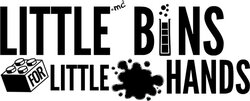

Easy Gravity Experiments For Kids
Why do things fall to the ground when you let go of them? It’s all to do with gravity! Learn about what gravity is with a simple definition and everyday examples of gravity. Explore simple physics with easy, hands-on experiments kids will love. From falling objects, balancing apples, and even an egg drop challenge, enjoy these fun gravity science projects for kids!
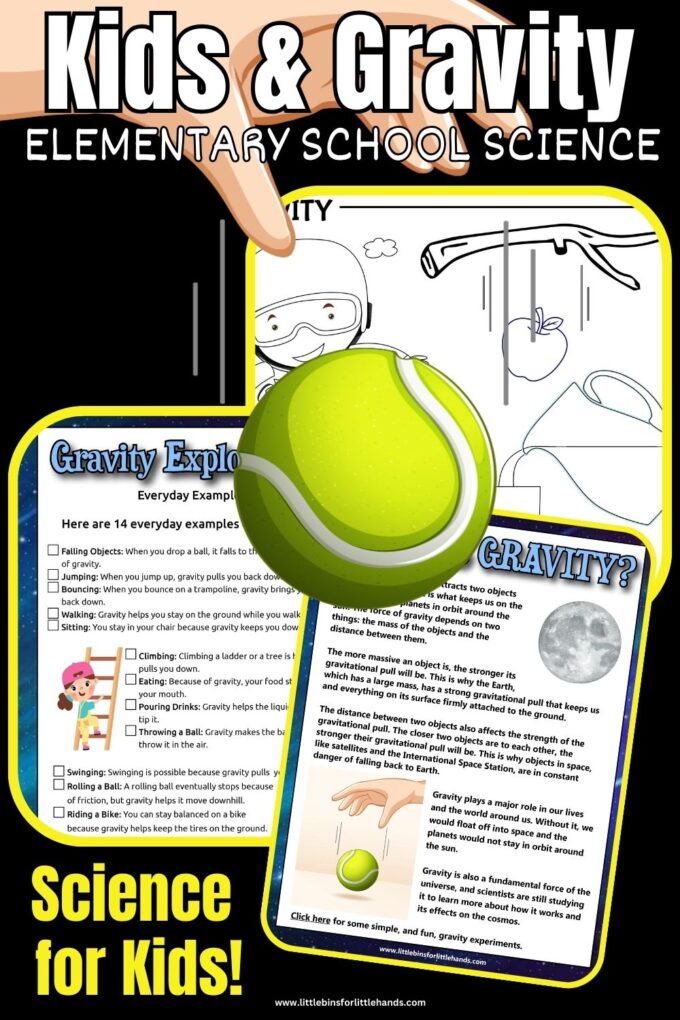
What is Gravity?
Gravity is a force that pulls objects toward each other. It’s why things fall to the ground when you drop them. On Earth, gravity pulls everything toward the planet’s center, so we stay on the ground instead of floating into space!
Gravity also keeps the planets in our solar system orbiting around the sun. The bigger something is, the stronger its gravity. So, Earth’s gravity is much stronger than the gravity of a small object like a ball, but not as strong as the sun’s gravity. Gravity affects everything around us, even though we can’t see it!
Have you ever watched a NASA video of an astronaut floating around inside his/her ship?
Galileo and Gravity
Galileo Galilei was a famous scientist who helped us understand how gravity works. He discovered that gravity is a force that pulls objects down toward the ground.
One of his famous experiments was when he dropped two objects of different weights from the Leaning Tower of Pisa to see if they would fall at the same speed. To everyone’s surprise, they did!
Galileo showed that gravity pulls all objects equally, no matter how heavy. This idea changed the way people thought about gravity and led to many important discoveries about how things move.

Ball Drop Experiment
- Two objects of different weights (like a small ball and a larger book)
- A chair or a step stool (to stand on safely)
What to do:
- Stand on the chair or stool (make sure you’re being safe!).
- Hold the two objects—one in each hand—at the same height.
- Drop both objects at the same time.
- Watch closely! Did they hit the ground at the same time?
What happens: Just like in Galileo’s experiment, you’ll see that both objects, even though they have different weights, should fall and hit the ground at the same time. This shows that gravity pulls objects to the ground at the same rate, no matter how heavy they are!
Everyday Examples of Gravity
Here are 15 everyday examples of gravity that are easy for kids to understand:
- Falling Objects: When you drop a ball, it falls to the ground because of gravity.
- Jumping: When you jump up, gravity pulls you back down to the Earth.
- Walking: Gravity helps you stay on the ground while you walk.
- Sitting: You stay in your chair because gravity keeps you down.
- Climbing: Climbing a ladder or a tree is harder because gravity pulls you down.
- Bouncing: When you bounce on a trampoline, gravity brings you back down.
- Swinging: Swinging on a swing set is possible because gravity pulls you back towards the Earth.
- Driving: Your car stays on the road because of gravity.
- Eating: Because of gravity, your food stays on your plate and in your mouth.
- Pouring Drinks: Gravity helps the liquid flow from a cup when you tip it.
- Throwing a Ball: Gravity makes the ball come back down after you throw it in the air.
- Rolling a Ball: A rolling ball eventually stops because of friction, but gravity helps it move downhill.
- Riding a Bike: You can stay balanced on a bike because gravity helps keep the tires on the ground.
- Water Flow: Water flows downhill because of gravity, which is why rivers and streams exist.
- Kite Flying: Gravity keeps the kite from flying too high, and the tension in the string is balanced by gravity pulling it downward.
Can you think of any more examples of gravity?
Free Gravity Information and Activity Pack
Get up and test gravity for yourself with a free gravity activity pack ! Share this information guide, quick activity, and gravity coloring sheet with your kids!
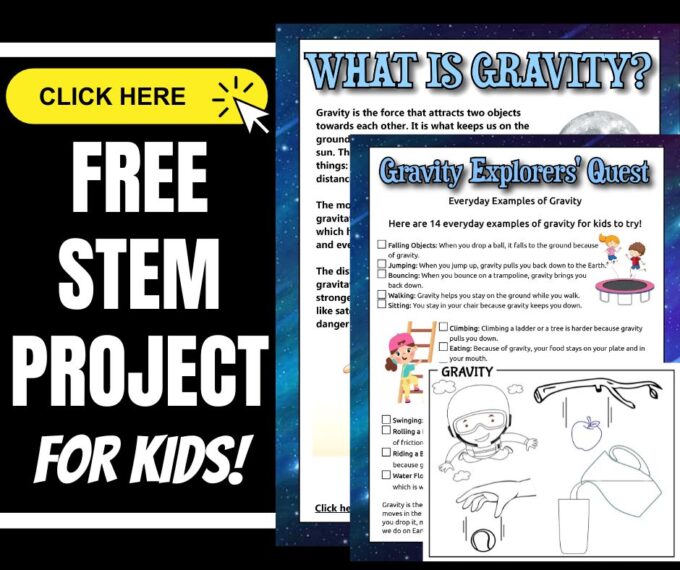
12 Gravity Experiments To Try
Here are 12 gravity science experiments that are great for elementary school kids. Learn about gravity and its effects in a fun and hands-on way.
You may also want to explore: Air Resistance Projects
Dropping Objects
Gather various objects of different weights and sizes (e.g., a feather, a paperclip, a small ball). Have kids predict which object will hit the ground first when dropped simultaneously and then test their predictions.
Paper Airplane Challenge
Have kids create paper airplanes of different sizes and shapes. Let them fly the planes and observe how gravity affects their flight paths differently based on their designs. See how to make a paper airplane launcher.

Falling Rates
Use a ruler or a measuring tape to drop different objects from the same height and measure the time it takes for them to reach the ground. Compare the falling rates of various objects.
Balloon Rocket
Attach a string to a balloon and tape the other end to a straw. Inflate the balloon and then release it. Observe how the air escaping from the balloon propels the straw in the opposite direction due to Newton’s Third Law of Motion.

Coin and Card Drop
Place a playing card on the edge of a table and let half of it hang over the edge. Hold a coin over the card’s hanging part and let it go. The card will fall due to gravity, but the coin’s rapid descent might surprise the kids as they learn about mass and air resistance .
Design A Parachute
Explore how mostly the forces of gravity and air resistance (also known as drag), slow down the descent of an object or person using a simple parachute. Vary the shape, size or material of the parachute and measure what happens.
Build A Pipeline
Make your own pipeline that will transport water from the main tank to a smaller tank using an incline. Observe how the moves because of gravity.
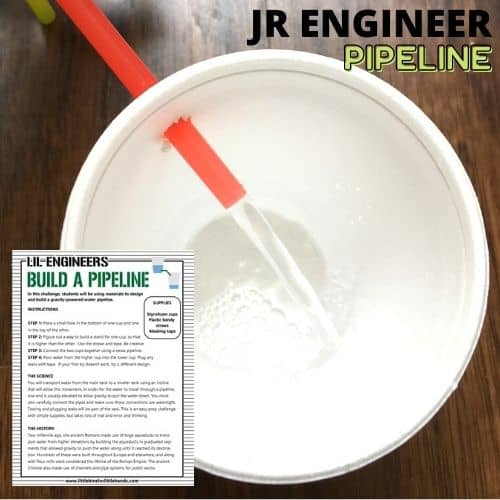
Water Upward
Fill a glass with water and place a piece of cardboard on top. Hold the cardboard and glass firmly together, then quickly turn the glass upside down. The water will stay inside the glass due to air pressure, demonstrating the balance between gravity and air pressure.
Rolling Race
Set up a ramp using books or a board. Have kids release different objects (marbles, toy cars) from the top of the ramp and see which one reaches the bottom first. Discuss how gravity affects the speed of rolling objects. See how to set it up with toy cars , pumpkins , apples and plastic Easter eggs .

Gravity-Powered Pendulum Painting
Attach a small container with paint to the bottom of a pendulum (a string with a weight at the end). Set the pendulum in motion and observe how it creates unique patterns on a piece of paper beneath it.
Crumpled Paper Drop
Crumple two pieces of paper into balls, one larger and one smaller. Drop them both at the same time and discuss how their sizes and air resistance affect their falling speed.
Balancing Act
Have kids experiment with balancing different objects on their fingertips. Discuss how the weight and shape of objects affect their balance due to the force of gravity. Have fun balancing animal puppets , mobile of paper shapes , pumpkins , and paper apples .
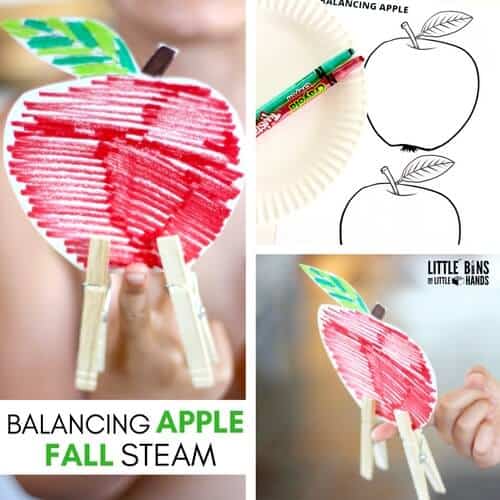
Egg Drop Challenge
Provide kids with materials like straws, rubber bands, tape, and newspapers. Challenge them to design a structure that will protect a raw egg when dropped from a certain height, demonstrating how objects experience less impact force when they have more time to slow down (larger parachutes or cushioning). See our egg drop ideas for younger and older students.
Water Wheel
Build a simple water wheel using a plastic container, a stick, and a paper cup. Place the water wheel under a steady stream of water and observe how gravity causes the wheel to turn. See how to build a simple water wheel here.
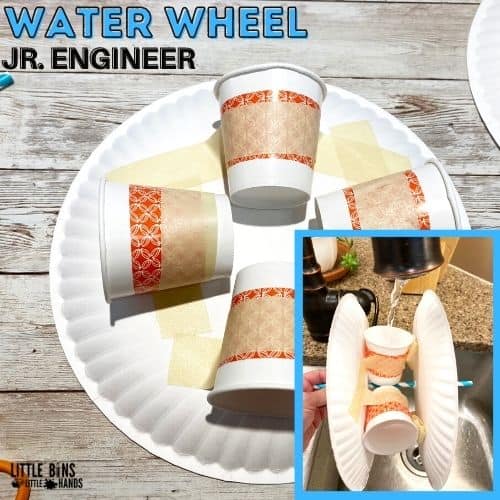
Have younger kiddos? Check out these fun gravity activities for preschool and kindergarten.
The Most Famous Gravity Experiment
Sir Isaac Newton is famous for many contributions to physics, and his experiments with gravity are among his most renowned works. One of the key experiments associated with Newton’s study of gravity is often called the “Newton’s Falling Apple,” which is a story rather than a controlled experiment.
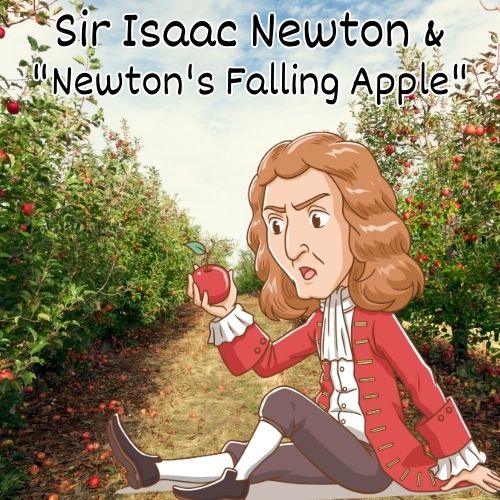
According to the legend, Newton was sitting under an apple tree in his garden when he saw an apple fall to the ground. This event got him thinking about the force that caused the apple to fall. Newton realized that the same force, gravity, was responsible for the apple’s fall and the motion of bodies in space like the Moon and planets.
Explore experiments that illustrate Newton’s Laws!
While this story is well-known, it’s important to note that it wasn’t a formal experiment. However, Newton conducted a series of experiments and observations to develop his laws of motion and the law of universal gravitation. These experiments and observations included:
- Prism Experiments: Newton’s experiments with prisms and light led to his groundbreaking work on optics, which is separate from gravity but an important part of his overall scientific contributions. See Newton’s color wheel spinner.
- Mathematical Calculations: Newton used mathematics to formulate his laws of motion and universal gravitation. He developed the mathematics of calculus to help describe and predict the behavior of objects under the influence of gravity.
- Kepler’s Laws: Newton built upon Johannes Kepler’s laws of planetary motion to develop his laws of universal gravitation. Kepler’s work was based on extensive astronomical observations.
So, while there isn’t a specific experiment directly related to the falling apple, Newton’s contributions to our understanding of gravity are based on a combination of observations, mathematical calculations, and experiments.
Have fun with physics! Check out our complete list of easy physics experiments.
Grab your FREE printable science worksheets!
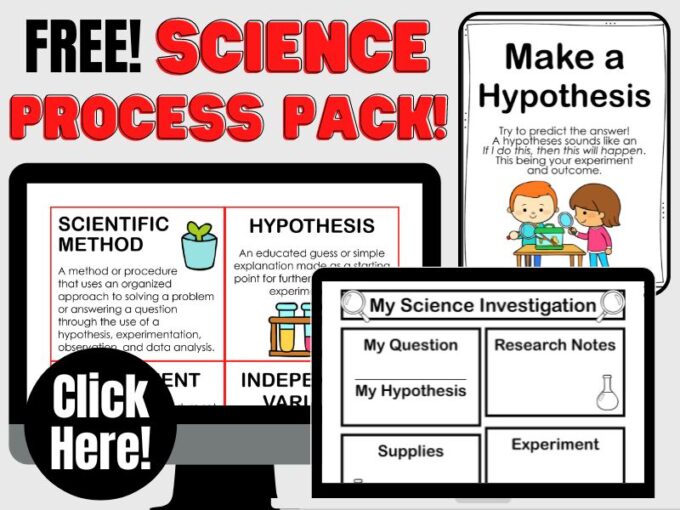
Helpful Science Resources To Get You Started
Here are a few resources that will help you introduce science more effectively to your kiddos or students and feel confident yourself when presenting materials. You’ll find helpful free printables throughout.
- Best Science Practices (as it relates to the scientific method)
- Science Vocabulary
- 8 Science Books for Kids
- All About Scientists
- Science Supplies List
- Science Tools for Kids
- Join us in the Club
More Physical Science Activities
- Light Experiments
- Magnet Activities
- Simple Machine Projects
- Potential & Kinetic Energy
- Static Electricity
- Surface Tension Experiments

Printable Science Projects For Kids
If you’re looking to grab all of our printable science projects in one convenient place plus exclusive worksheets and bonuses like a STEAM Project pack, our Science Project Pack is what you need! Over 300+ Pages!
- 90+ classic science activities with journal pages, supply lists, set up and process, and science information. NEW! Activity-specific observation pages!
- Best science practices posters and our original science method process folders for extra alternatives!
- Be a Collector activities pack introduces kids to the world of making collections through the eyes of a scientist. What will they collect first?
- Know the Words Science vocabulary pack includes flashcards, crosswords, and word searches that illuminate keywords in the experiments!
- My science journal writing prompts explore what it means to be a scientist!!
- Bonus STEAM Project Pack: Art meets science with doable projects!
- Bonus Quick Grab Packs for Biology, Earth Science, Chemistry, and Physics.

Subscribe to receive a free 5-Day STEM Challenge Guide
~ projects to try now ~.
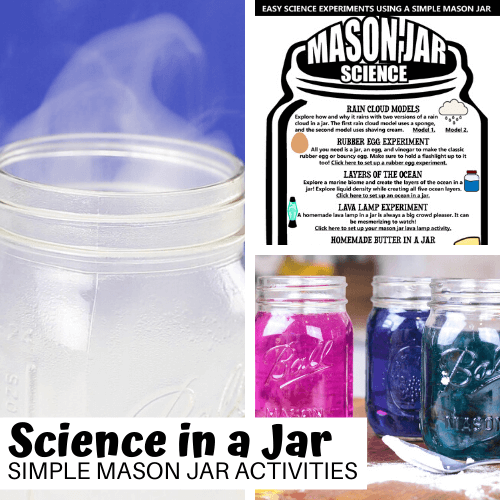
- Skip to primary navigation
- Skip to main content
- Skip to primary sidebar

- FREE Experiments
- Kitchen Science
- Climate Change
- Egg Experiments
- Fairy Tale Science
- Edible Science
- Human Health
- Inspirational Women
- Forces and Motion
- Science Fair Projects
- STEM Challenges
- Science Sparks Books
- Contact Science Sparks
- Science Resources for Home and School
Gravity Experiments for Kids
July 5, 2021 By Emma Vanstone Leave a Comment
These gravity experiments are all fantastic demonstrations of gravity and a great way to learn about Isaac Newton and Galileo ‘s famous discoveries. If you enjoy them, do check our my book This IS Rocket Science which is full of exciting space activities demonstrating how rockets overcome gravity and other forces to launch into space followed by a tour of the solar system with an activity for each planet.
What is Gravity?
Gravity is the force that pulls objects towards the Earth. It’s the reason we walk on the ground rather than float around.
Gravity also holds Earth and the other planets in their orbits around the Sun.
Did you know – gravity exists on the Moon but it is not as strong as on Earth, which is why astronauts can jump higher on the Moon than on Earth. This article from ScienceAlert tells you how high you could jump on each planet in the Solar System compared to Earth.
Great Gravity Experiments for Kids
Galileo and gravity.
Galileo was a famous scientist in the 16th and 17th Century. His most famous observation was that two objects of the same size but slightly different mass (how much “stuff” it is made of) hit the ground at the same time, as far as he could tell, if they are dropped from the same height. This happens because the acceleration due to gravity is the same for both objects and that actually this acceleration has nothing to do with the mass of an object. This fact has been demonstrated many times, even on the moon with a feather and a hammer.
Back on our air-filled planet, if a feather and a ball are dropped from the same height they clearly do fall at different rates. This is because gravity is not the only force acting on the falling object, air resistance is also a factor and that does depend on quite a few properties of the object and the fluid it is falling in. This does include its mass, the surface area and how fast it is moving. The feather suffers a lot here being so light and having a much greater surface area.
Galileo dropped two balls of different weights but the same size off the Leaning Tower of Pisa, giving a hint that the mass of an object doesn’t affect how fast it falls.
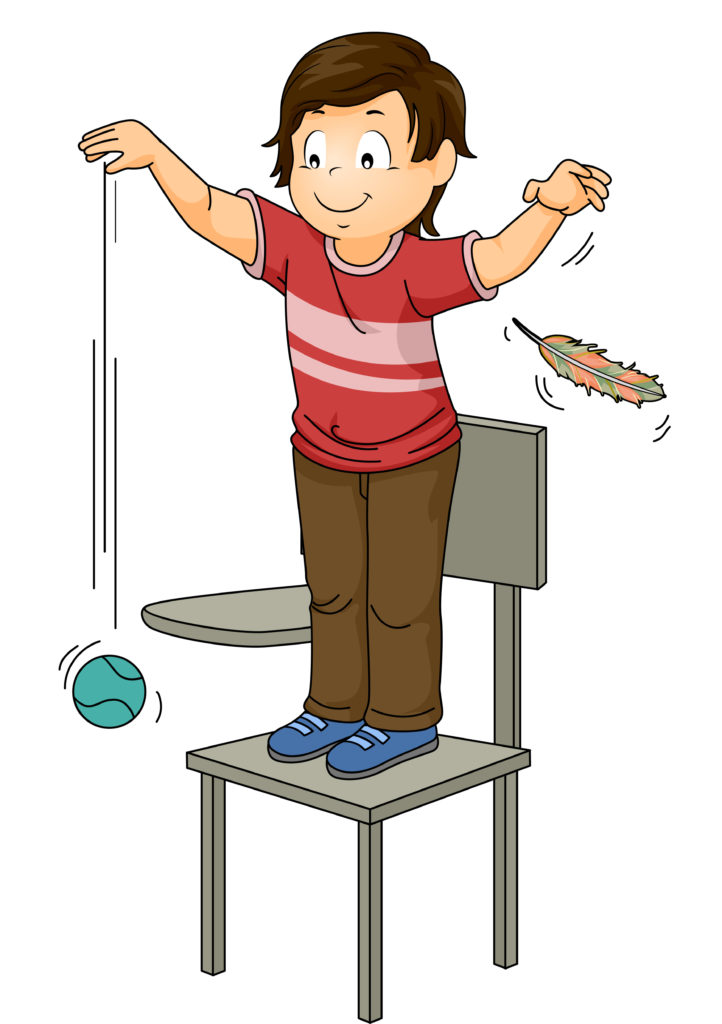
However if a ball and feather are dropped in a vacuum , where there is no air resistance as there’s no air, the ball and feather will fall together and hit the ground at the same time.
Bottle Drop Experiment
Following on from the ball and feather experiment another great example of Galileo’s discovery is to half fill one plastic bottle and leave another ( the same size ) empty. If dropped from the same height they will hit the ground at the same time!
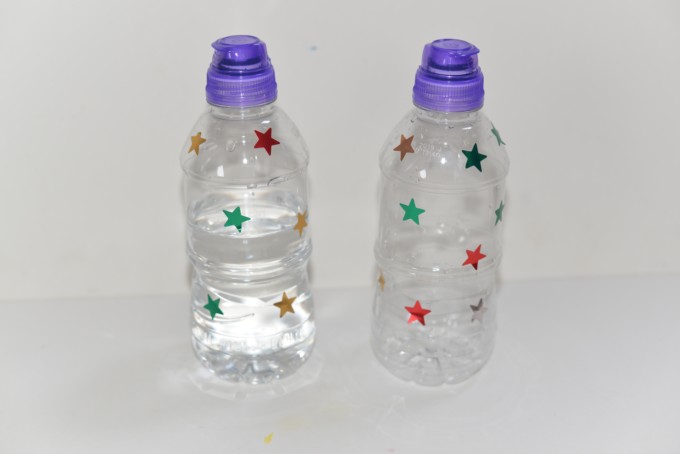
Issac Newton and Gravity
According to legend Issac Newton was sitting under an apple tree when an apple fell on his head, which made him wonder why if fell to the ground.
Newton published the Theory of Universal Gravitation in the 1680s, setting out the idea that gravity was a force acting on all matter. His theory of gravity and laws of motion are some of the most important discoveries in science and have shaped modern physics.
Film Canister Rocket
A film canister rocket is a fantastic demonstration of all three of Newton’s Laws of Motion , but it falls back to the ground thanks to gravity.
Water powered bottle rockets are another great fun example of gravity and lots of other forces too!
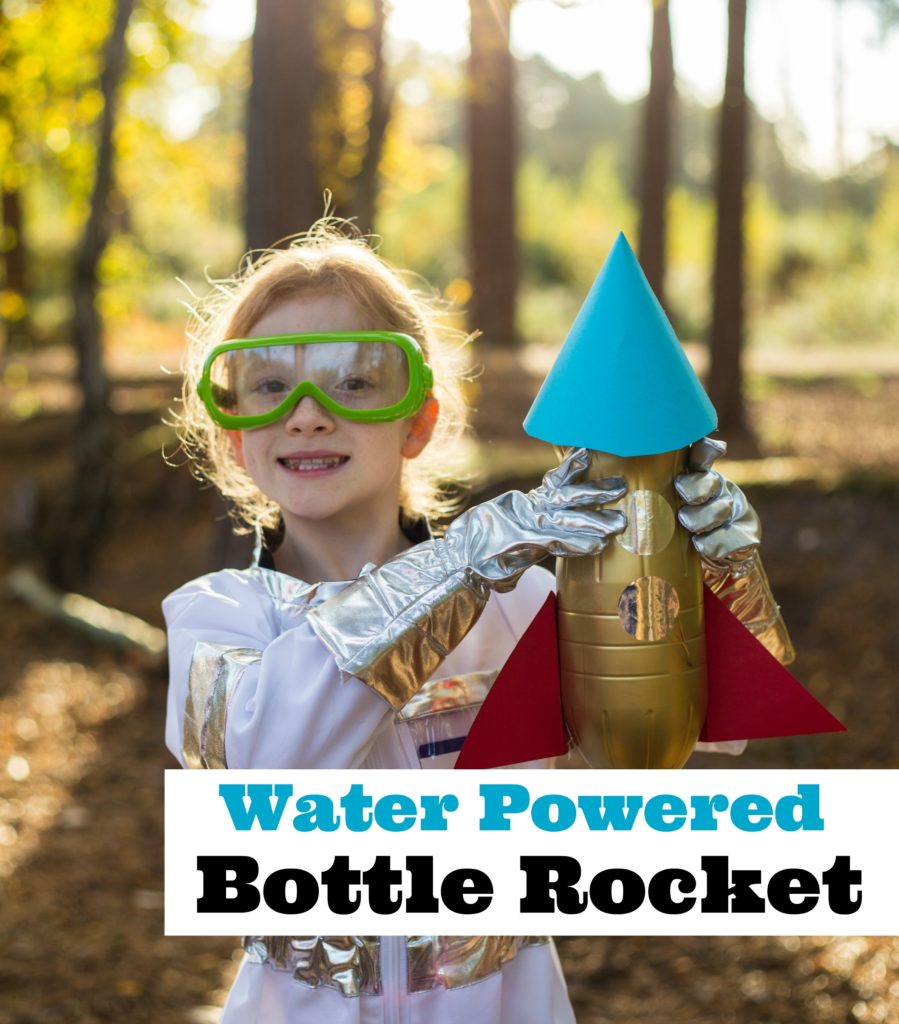
Defy gravity with a magnet
Did you know you can defy gravity using magnets. We love this activity as you can theme it however you want. Your floating object could be a spaceship in space, a flower growing towards the sun or even a plane in the sky.
The magnet holds the paperclip in the air as if it’s floating!
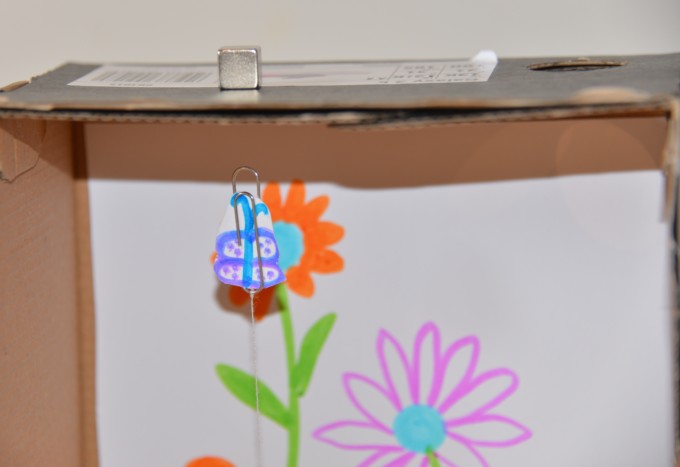
Straw Rockets – Gravity Experiment
Create your own straw rockets and launch at different angles to investigate how the trajectory changes. Of course these don’t have to be rockets, they could be anything you want, so get creative!
Parachutes are another great gravity experiment and perfect for learning about air resistance too!
Marble Runs
A DIY marble run is another hands on way to demonstrate gravity. Can you build one where the ball has enough energy to move uphill?
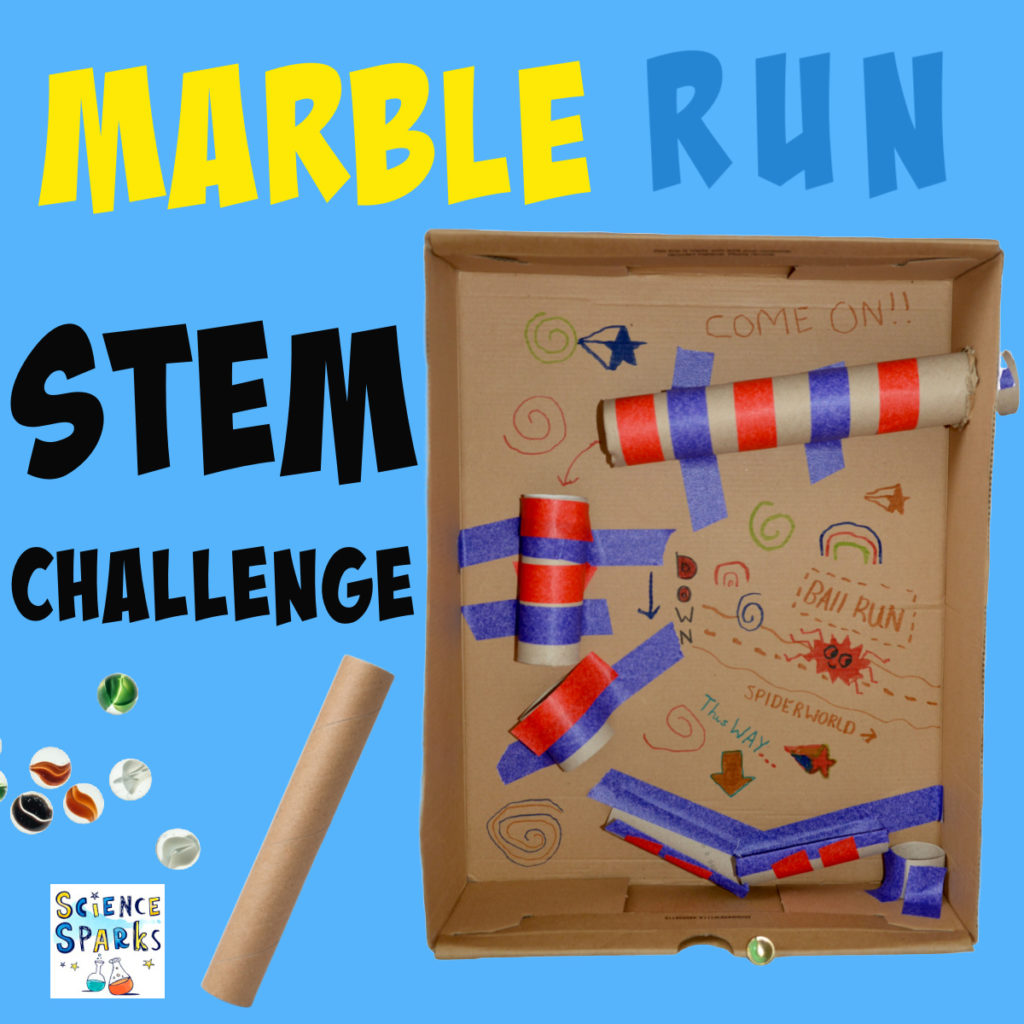
DIY Sling Shot
Finally, a simple slingshot is a brilliant and simple STEM project and perfect for learning about gravity as a shower of pom poms fall to the ground!
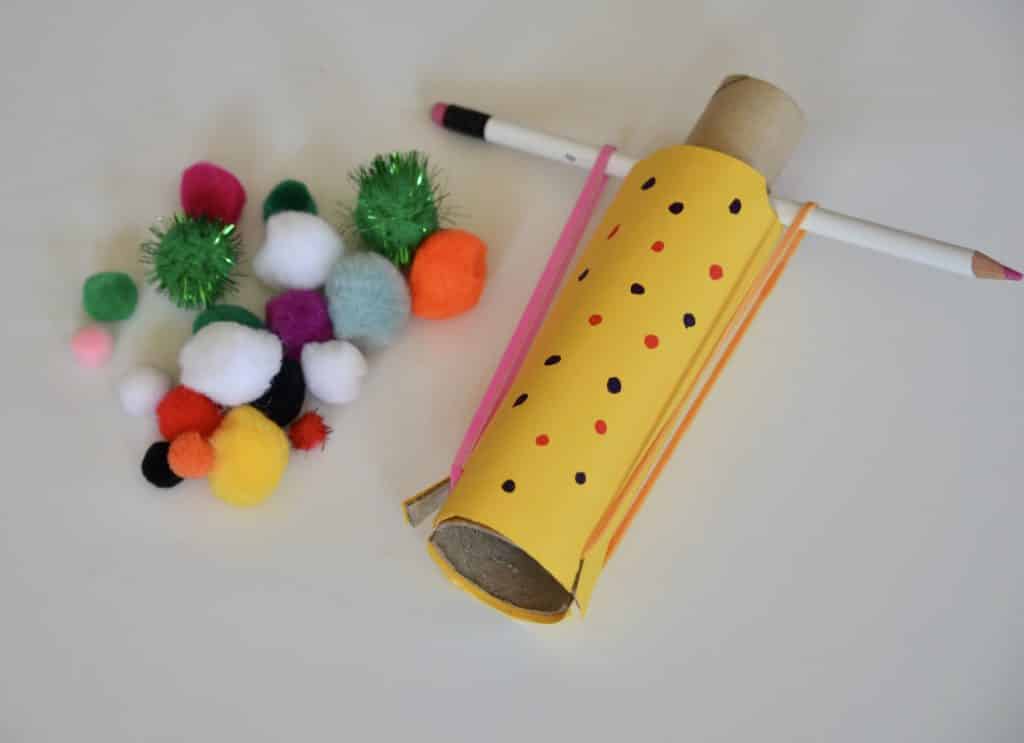
Last Updated on May 25, 2022 by Emma Vanstone
Safety Notice
Science Sparks ( Wild Sparks Enterprises Ltd ) are not liable for the actions of activity of any person who uses the information in this resource or in any of the suggested further resources. Science Sparks assume no liability with regard to injuries or damage to property that may occur as a result of using the information and carrying out the practical activities contained in this resource or in any of the suggested further resources.
These activities are designed to be carried out by children working with a parent, guardian or other appropriate adult. The adult involved is fully responsible for ensuring that the activities are carried out safely.
Reader Interactions
Leave a reply cancel reply.
Your email address will not be published. Required fields are marked *
- Skip to primary navigation
- Skip to main content
- Skip to primary sidebar
Teaching Expertise
- Classroom Ideas
- Teacher’s Life
- Deals & Shopping
- Privacy Policy
Gravity Activities For Middle School: Experiments, Puzzles, Challenges, And Investigation
January 28, 2024 // by Cassie Caroll
The concept of gravity becomes much more accessible through hands-on materials and activities. When your student is ready to learn about gravitational forces, the laws of motion, and air resistance, an engaging demonstration of these abstract ideas can make instruction that much more effective. With some simple materials, you can recreate these demonstrations of gravity in the comfort of your own home. Here are some of our favorite gravity activities that are instructive, entertaining, and user-friendly!
Center of Gravity Activities
1. center of gravity experiment.
Jumpstart your learner by challenging them to a seemingly impossible challenge: balancing a craft stick on top of a chopstick. For this activity, you’ll need a couple of clothespins, a chopstick, a craft stick, and some pipe cleaner. By the end, your student will begin to visualize the center of gravity.
Learn More: Rookie Parenting
2. Gravity Puzzle
We’ll admit, at first this activity seems far more complex than necessary. To simplify the setup process, start the gravity puzzle video at 2:53 for easier design. This experiment with a balance point and center of gravity will quickly become a favorite magic trick, too!
Learn More: YouTube
3. Uncanny Cancan
Ever seen a soda can do ballet? Now is your chance with this center of gravity lab! We love this activity because it can be as quick or lengthy as you’d like depending on the number of trials you perform, and all you need is an empty can and some water!
Learn More: ABC
Velocity and Free Fall Activities
4. falling rhythm.
This experiment is relatively simple in execution, but more complex in analysis. As your learner listens to the rhythm of the falling weights, consider contextualizing their observations with the basic ideas of velocity, distance vs. time, and acceleration.
Learn More: Exploratorium
5. Egg Drop Soup
This egg drop trick is another experiment that can begin with a challenge: how do you drop an egg into a glass of water without touching either one? This demonstration gives learners the chance to better understand balanced and unbalanced forces in action.
Learn More: Generation Genius
6. Origami Science
Understanding the balance between gravity and air resistance can be quite simple with some simple materials and a bit of origami. This activity lends itself well to opportunities to make a claim with evidence as you modify your origami drop.
Learn More: Little Bins for Little Hands
Gravitational Phenomenon Demonstrations
7. gravity defiance.
Although this experiment is demonstrated with younger children, this can be an excellent lesson opener to introduce the role of gravity and gravitational pull. Challenge your student to experiment with distance and magnetic strength by trying different positioning of the magnet and clips!
Learn More: Buggy and Buddy
8. Air Pressure and Water Weight
To demonstrate the concept of air pressure, all you need is a glass of water and a piece of paper! We especially love how this resource provides a thorough lesson plan and a Powerpoint with notes to complement the experiment.
Learn More: Cool Science Experiments HQ
9. $20 Challenge
We promise, no money will be lost in this experiment. But if you’d like to play it safe, you can always make it a $1 challenge! Test your students’ dexterity and patience with this fun experiment in gravitational pull.
Learn More: Thirteen
10. Centripetal Force Fun
This engaging video shows multiple gravity-defying experiments to try, but our favorite begins at minute 4:15. By swinging your cup or bottle at a constant rate, the water will remain in the vessel, seemingly defying gravity! Nanogirl’s explanation helps contextualize this phenomenon for your learner.
Learn More: Nanogirl STEM Activities for Kids
Gravity on Earth and Beyond Activities
11. out of this world gravity investigation.
Help your learner get a grip on gravity by walking them through this gravitational exploration of the greater solar system. This activity provides the procedure, worksheets, and recommended extensions and modifications. In conjunction, have your student take a virtual tour of the ISS to build some background knowledge.
Learn More: ESA Multimedia and CASIS Academy
12. Build a Model for Gravity in Space
When viewing a diagram of our solar system, it is easy to view the planets as mere distant objects, however, this demonstration allows students to better understand the definition of gravity as it pertains to our galaxy. Grab some chairs, billiard balls, and some stretchy material, for this rewarding demonstration!
Learn More: iTeachly
13. Elevator Ride to Space
Far from Willy Wonka’s glass elevator, our everyday elevators are excellent demonstrations of gravitational interactions. This activity allows learners to better understand how the effects of gravity become seemingly aberrant in space without leaving Earth! We recommend bringing along a towel in case of any spillage!
Learn More: Education
14. “Rocket” Science
I guess this hands-on gravitational force activity is indeed “rocket science!” This rocket-building experiment works with chemical reactions, increases in velocity, rate of acceleration, and the laws of motion. We recommend this project as either a concluding activity or an extension into more complex concepts.
Learn More: Ward’s World
15. Magnetic Learning
Need a quick opener or closer to a lesson? This gravity and magnetism activity can be a fun demonstration of magnetic fields and gravitational force. Be sure to read the notes in this activity to extend this experiment in different ways.


Gravity Lesson Plans
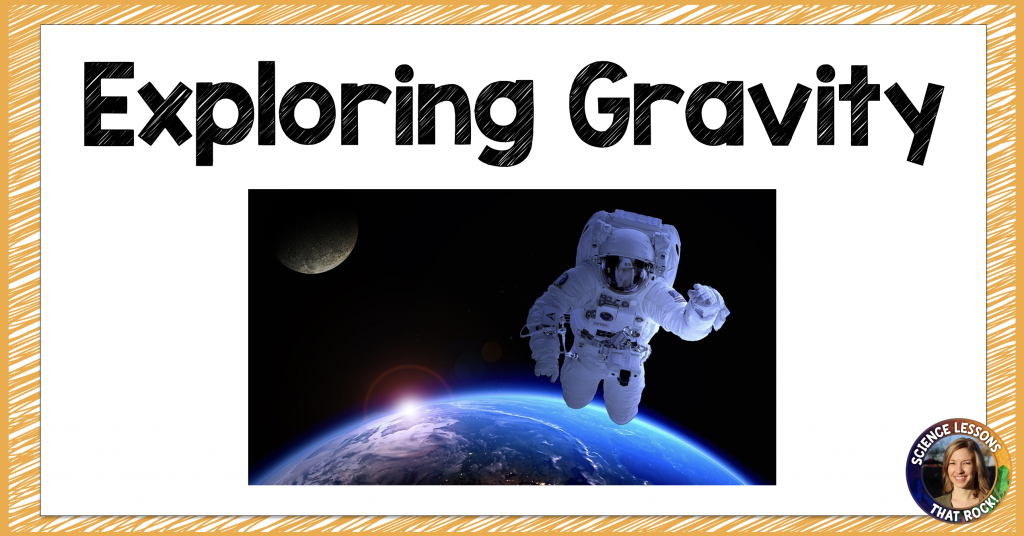
Gravity is such a fun topic to talk about with students. We experience it every day, and it impacts every aspect of our lives. It’s something we take for granted, and don’t think twice about. Let’s change that!
I like discussing gravity at the beginning of my astronomy unit. We don’t dive into the causes of gravity and space-time, but we discuss what impacts gravitational force (distance and mass) and do some fun experiments for them to explore it in more depth. Then we circle back around to it when we learn about nebular theory and how our solar system is organized. Below is a list of lesson ideas to get you started!
Gravity Activities:
- PHET is one of my go-to websites for virtual labs and simulations. They have an interactive on gravity and orbits where students can change the mass of the sun or Earth and see what it does to our gravitational pull, velocity, and orbital path. You can find it here.
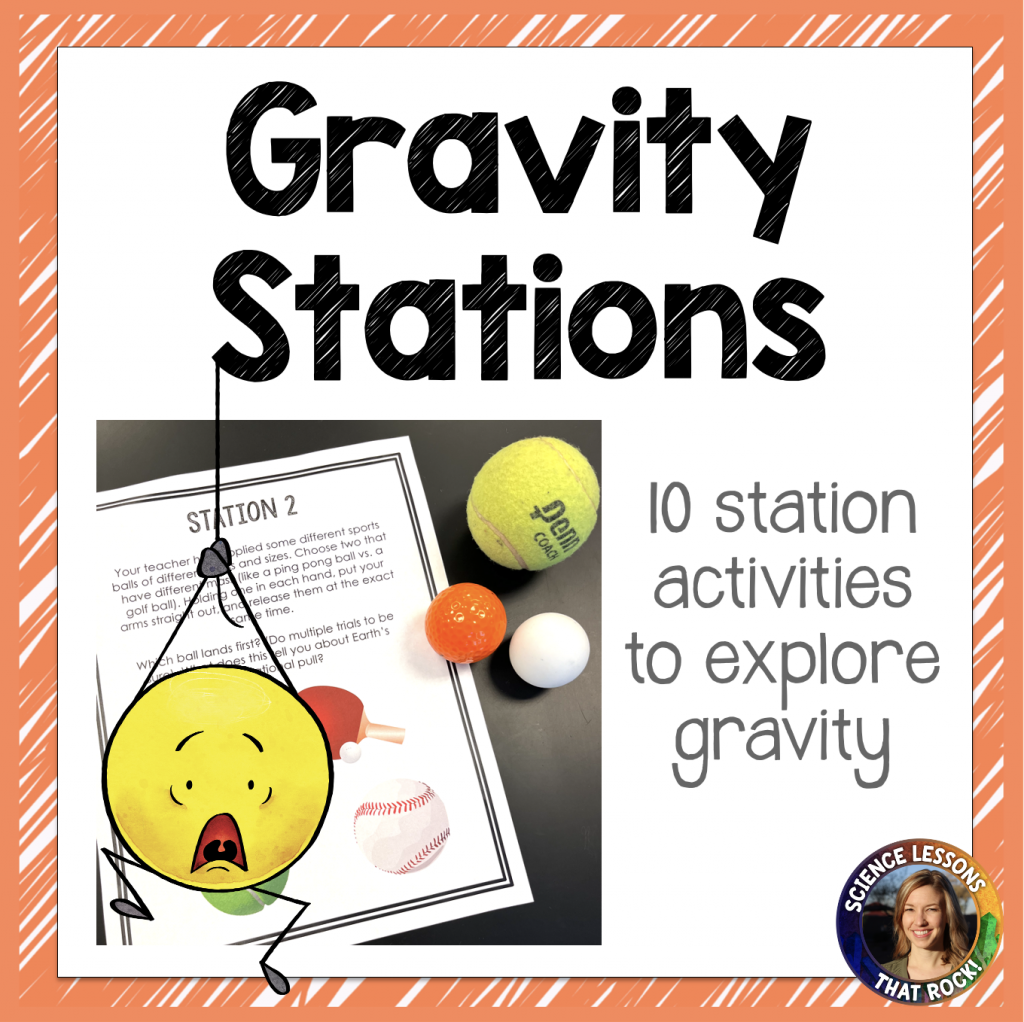
2. Here is a station activity where students explore different aspects of gravity. Stations include things like: an online simulation, exploring their weight on different planets, watching a video clip about the impact of zero gravity on the human body, and thinking critically about things like tides and black holes. You can find the activity in my TpT store or on my website .
3. Have a little time on your hands? Build a gravity well! You will need something large and circular (hula hoop works great, but a large bowl can also work in a pinch), a large piece of spandex material, and binder clips. You can find a tutorial here . Students will play with balls (planets) of different masses and observe their orbital path.
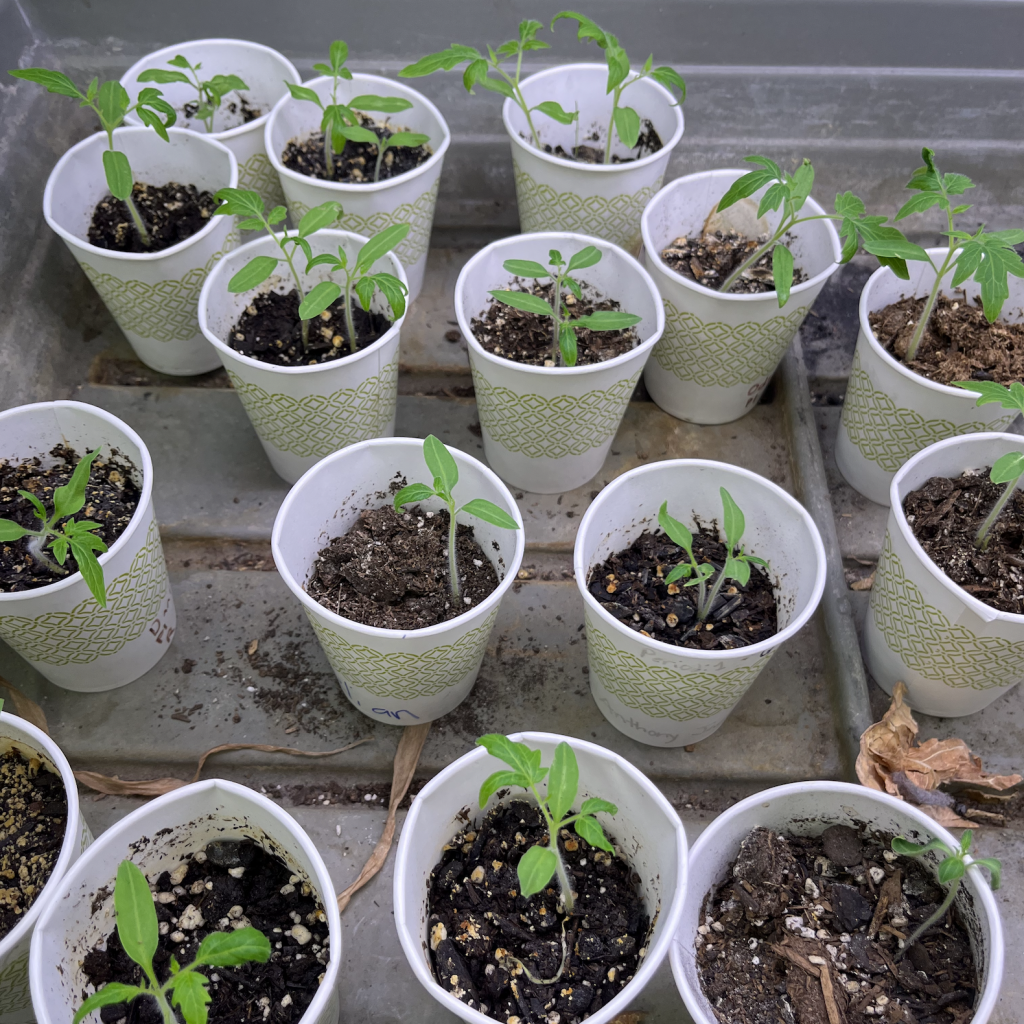
4. Have you heard of Tomatosphere ? My students LOVE it! You can order tomato seeds from them twice a year. Half of the seeds they mail you will be Earth seeds, and the other half will be from tomato plants that grew on the international space station (yes, you read that right). Students in your classes make predictions about the impact of zero gravity on the growth of tomato plants, and then get to germinate and grow the seeds. Once they have grown for a month or two you submit your results on the website and they will let you know which seeds were space seeds and which were the control group. I won’t spoil any of the fun, but you should definitely try it!
5. How high can you jump on other planets? Here is an easy activity you can do with students where they calculate how high they can jump on other planets based on the amount of gravity. If you would prefer a digital interactive instead, check out this one .
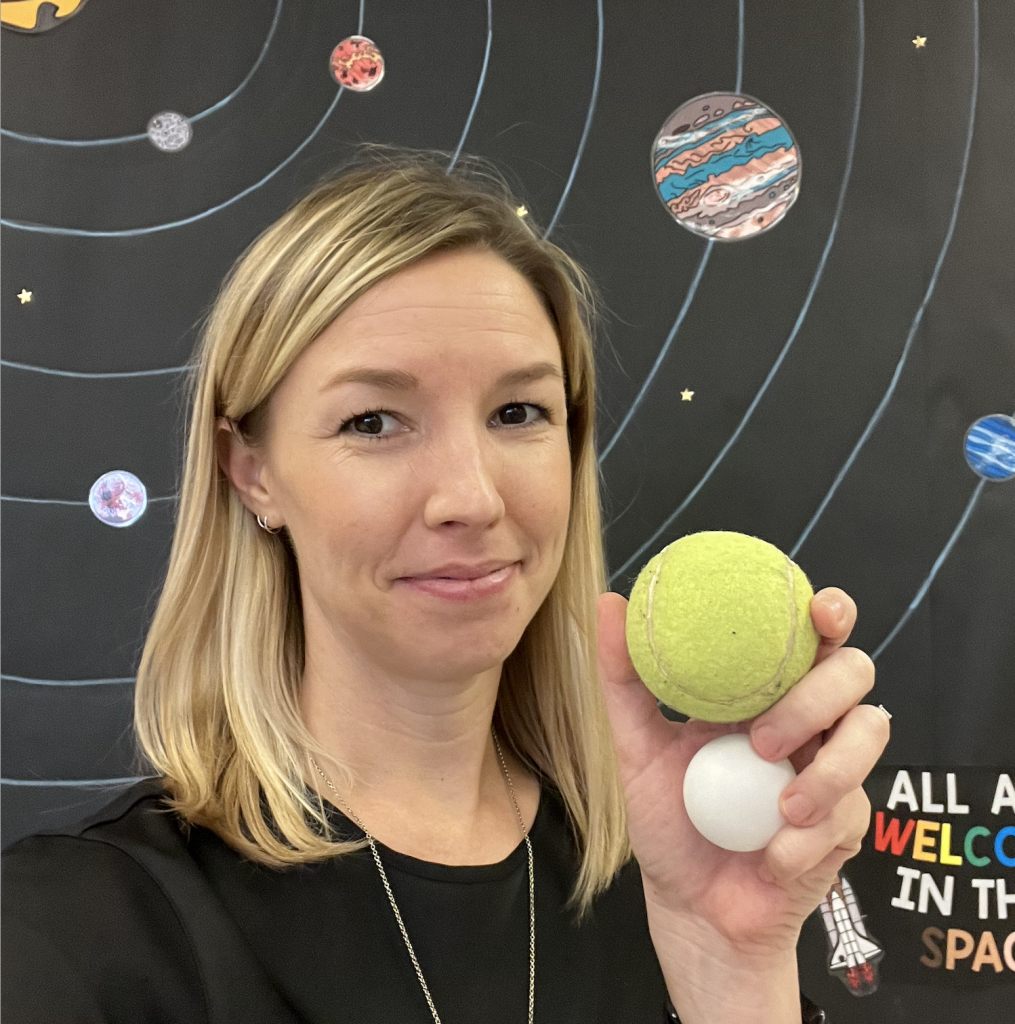
6. This timeless experiment still stumps students of all ages. If you drop a baseball and a ping pong ball at the same time, which will land first? (You can use any balls you want for this demo, but choosing two with very different mass throws them for a loop). I let them play around with it, and then we discuss. (If kids want to be “extra” they can record it using slo-mo on their phone). It’s fun to follow up the class discussion with this video clip from the Apollo 15 mission of Astronaut David Scott dropping a hammer and feather on the moon.
7. Speaking of video clips, it’s time to talk about life on the ISS. What is life like living in zero gravity? Astronaut Chris Hadfield has some pretty fun videos on Youtube that answer things like “ how do you sleep in space? ” and “ what happens to used water on the ISS? ” (kids go crazy when they learn urine is recycled into drinking water).
8. Here is an EASY experiment! You only need a cup (paper or styrofoam that you can poke a hole in) and some water. If you fill the cup with water and drop it, does water exit the hole?
I hope you and your students enjoy one or more of these activities!

- Read more about: Astronomy
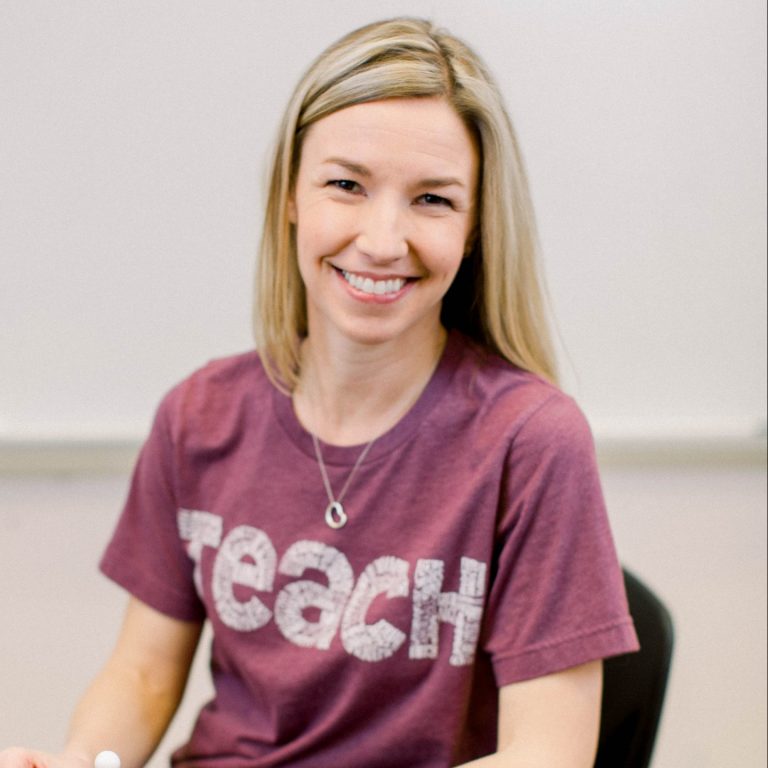
Hi, I'm Becca!
Search the site, browse by category.
- Back to School
- Biochemistry
- Body Systems
- Classification
- Classroom Decor
- Classroom Management
- Distance Learning
- End of the School Year
- Experiments
- Field Trips
- For NEW Teachers
- Formative Assessment
- Media in the Classroom
- Microscopes
- Photosynthesis & Respiration
- Plate Tectonics
- Sustainability
- Teacher Tips
- Weather and Climate
Get Freebies!
You might also like....
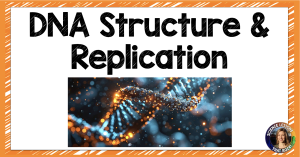
Teaching DNA Structure and Replication just got easier
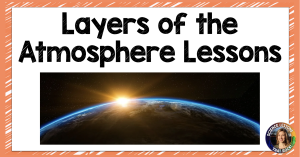
10 Atmosphere Lessons for High School

Read Aloud Closure Assignments

Want a fun way to practice science vocabulary? Try out seek and finds!

Privacy Overview
Simple Gravity Experiments
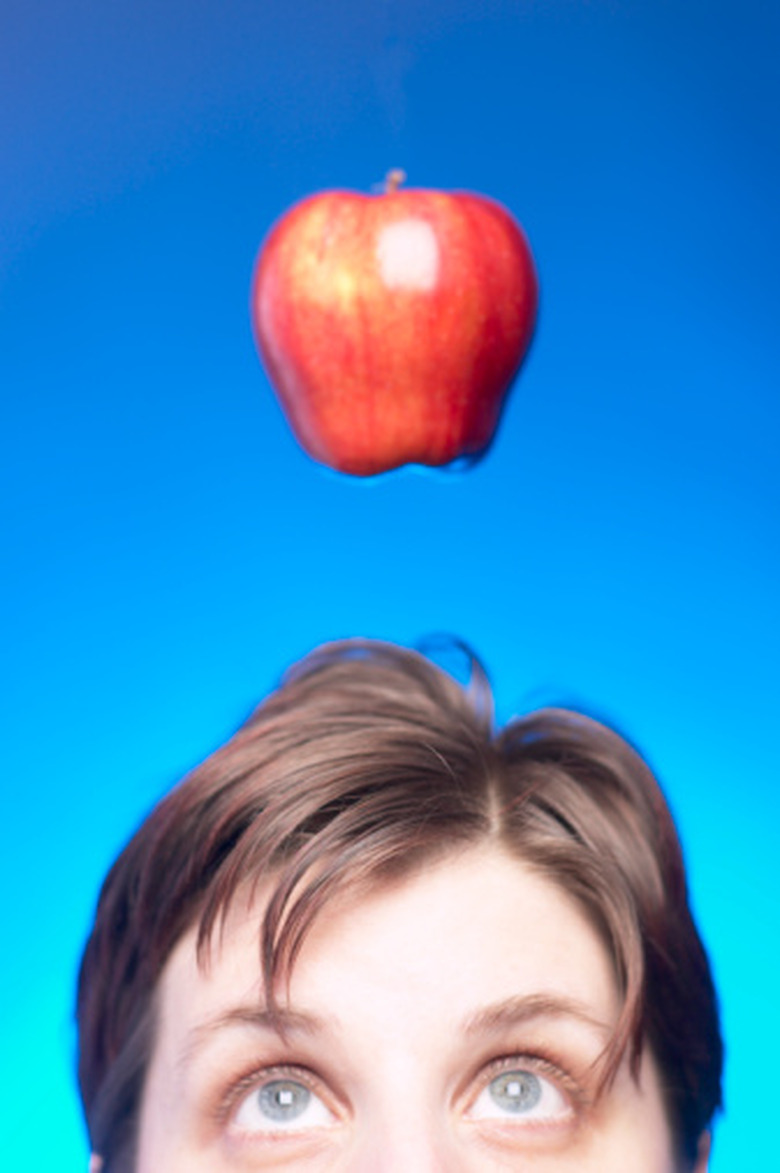
Gravity is a fundamental part of nature that keeps our feet planted firmly on the ground. This unseen force is responsible for tides, keeping Earth from careening into the darkness of space, and for causing food to hit the kitchen floor when it slips from your hand. Though invisible, gravity's effects can be observed by performing simple and easy-to-do experiments.
Galileo's Experiment
Named after the scientist who is popularly believed (though not verified) to have performed this experiment, it involves taking two objects of different sizes and weights and dropping them to see which one hits the ground first. As the Earth's gravity affects objects at the same rate regardless of their weight, without air resistance the objects should hit the ground at the same time. Try this with different objects with varying weights and air resistance and observe its effects.
The Spinning Bucket
Showing the relation between motion and gravity, for this experiment you need a bucket with water and someone with a strong arm to spin it. In theory, when the bucket turns upside down the water should come spilling out as gravity pulls it downwards. Spinning it fast enough, the water tends to keep going in a straight line, counteracting the pull of gravity and thus wedging it to the end of the bucket, preventing the natural pull of gravity from spilling the water. This is why this effect, called "centrifugal force" is often referred to as artificial gravity.
The Hole in the Cup
For this experiment you need a paper cup and some water. Poke a hole in the cup and cover it with a finger; fill the cup with water. Take your finger from the hole and notice the water spills out. Though gravity pulls down both objects, only water moves freely (because you're holding the cup); thus, gravity forces the water out. Fill the cup again and drop it to the ground. Now that both objects are free to move, they drop at the same speed so the water isn't forced out of the hole.
Center of Gravity
A center of gravity experiment can be done quite easily; all that is required is a pencil or pen and your finger. Try to balance the pen at different positions on your finger until you reach the point where it doesn't fall off. This is the center of gravity of the pen, the point in which its weight averages out and, if it were in a weightless environment, the point at which it can freely rotate. Put on the cap and try to balance it again. As the weight of an object changes, so does its center of gravity.
- Kids Science Experiments: Spinning Bucket of Water
- Discovery Channel: Gravity Gets You Down
- NASA: Center of Gravity
Cite This Article
Johnson, Steve. "Simple Gravity Experiments" sciencing.com , https://www.sciencing.com/simple-gravity-experiments-8555558/. 24 April 2017.
Johnson, Steve. (2017, April 24). Simple Gravity Experiments. sciencing.com . Retrieved from https://www.sciencing.com/simple-gravity-experiments-8555558/
Johnson, Steve. Simple Gravity Experiments last modified March 24, 2022. https://www.sciencing.com/simple-gravity-experiments-8555558/
Recommended

3 Unique Gravity Experiments to Try with Your Kids
Simply put, gravity is the force of the earth that pulls objects towards its core, preventing them from floating off into space. For many adults, explaining the concept of gravity to a child can seem daunting. However, through the use of the following gravity experiments for kids, children will gain a better grasp of gravity’s role in our everyday lives while also having some fun!
Paperclip Gravity Experiment
Most gravity experiments don’t require many materials. For this experiment you’ll use:

- Paper clips
First, tie one end of a piece of string to a paperclip and tie the other end around the stick. Repeat twice more so that the stick has three paper clips attached. Hold the stick up in the air, allowing the paperclips hang freely. Tilt the stick back and forth.
As is demonstrated, Earth’s gravity is continuously pulling our bodies and the objects around us to its core. Even when the stick is tilted, Earth’s gravitational pull exerts its force on the paper clips pulling them straight down toward the Earth.
Gravity Water Drop
This next experiment requires just three items:
- A paper cup
On the outside of the cup near the bottom, poke a hole using a pencil. Placing a finger over the hole, fill the cup with water. Remove your finger from the hole. You should find that the water flows out of the cup in an even, steady stream (if the water is not quite flowing smoothly, try poking a new hole and refill the cup with water). Next, holding your finger over the hole, fill the cup once again with water. Drop the cup, removing your finger from the hole at the same time. You’ll find that as the cup falls, no water flows out of the hole.
When you first held the cup in the air and removed your finger, gravity pulled the water down towards the ground and water pressure forced it out of the hole. However, when the cup and water fell at the same speed, there is no water pressure. Without this force, the water remains inside the cup as gravity pulls both to the ground.
Galileo’s Experiment

- A sturdy chair
- Various household items
Gather items of differing weights and sizes, such as a ball, action figure or doll, and a balloon. Have your child stand on top of the chair while holding the items. One at a time, have your child drop each item from the same height. Keep track of how long it takes each item to reach the ground.
Though many believe that larger, heavier items will hit the ground first, this is not true. The rate of Earth’s gravitational pull on all objects is the same regardless of weight. Given the absence of air resistance, each object should reach the floor at the same time. Do your finding support this?
Testing the laws of gravity (or defying them !) can be done in a variety of hands-on, entertaining ways around the house and at school. Experiments for kids like those above are a great way to get kids learning and asking important questions about the world around them.
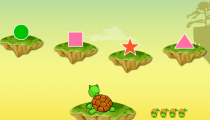
- Next Post: Using Pre-School Games to Help Kids Learn the Alphabet →
- ← Previous Post: Kindergarten Word Searches to Begin Building Your Child’s Vocabulary

All About Force: Push and Pull

Please enable JavaScript

You can’t see them, but forces make the world go round. Friction happens when two things rub against each other. Friction makes things slow down.
It can also warm them up. Try rubbing your hands together. Are your hands warmer? Gravity is a natural force. It pulls everything down towards the earth .

Push and Pull Facts for Kids
- Push and pull are types of forces.
- Push moves things away, pull brings them closer.
- You push a swing to make it move.
- You pull a door to open it.
- Gravity pulls objects toward the earth.
- Magnets can push or pull each other.
- Friction can slow a push or pull.
- A tug of war game involves pulling.
- We push pedals to ride a bike.
- Pulling a kite string helps it fly.
Basic Physics Concepts
Hey kiddos, did you know that the world of physics isn’t as scary as it sounds? It’s all around us, even when we’re just pushing a swing or pulling a toy wagon.
That’s right! You’re using physics every day without even realizing it. When you push a swing, you’re applying a force that makes it move. This is called a ‘push force’.
On the other hand, when you pull your toy wagon, you’re using a ‘pull force’. These are basic physics principles you can see and feel.
Remember, every action has an equal and opposite reaction. So, when you push or pull something, it pushes or pulls back with the same strength.
That’s physics for you, as simple as pushing a swing or pulling a toy wagon.
Force and Motion
You’re on a journey to unravel the secrets of force and motion, aren’t you? Well, push and pull are two fundamental concepts that make things move.
When you push something, you’re applying force to move it away from you. Think about pushing a swing or a shopping cart.
On the other hand, when you pull something, you’re using force to bring it closer. Imagine pulling a door open or tugging a kite down from the sky.
In both these actions, you’re changing the object’s motion. If it was still, it starts moving; if it was already moving, you’re changing its direction or speed.
But remember, the harder you push or pull, the faster the object moves. That’s the magic of force and motion!
Simple Machines (levers, pulleys)
Feeling the weight of the world on your shoulders? Don’t fret; simple machines like levers and pulleys are here to lighten your load!
Did you know that levers and pulleys are types of simple machines that use push and pull forces to make work easier? A seesaw is a perfect example of a lever. When you push down on one end, the other end goes up. Pretty cool, right?
Now, let’s talk about pulleys. Imagine you’re trying to lift a heavy bucket. With a pulley system, you can pull down on a rope, and the bucket goes up! It’s a fantastic way to lift heavy things without using too much muscle power.
So, you see, understanding push and pull can make your life much easier.
Magnets and Magnetism
Ever thought about how magnets stick to your fridge or why they attract and repel each other? That’s the fascinating world of magnetism for you!
Magnets have two poles – north and south. Like poles repel each other, while opposite poles attract. That’s why if you try to push two magnets together with the same poles facing each other, they’ll push away.
Now, think of Earth as a giant magnet. It has a magnetic field that pulls everything towards it. That’s why when you jump, you always land back on the ground.
Magnets can also affect other magnets and certain metals like iron. That’s how a fridge magnet sticks to the fridge. It’s all part of the incredible push and pull facts that make our world so interesting!
Science Experiments for Kids
Unleashing your child’s inner scientist can be an exciting adventure with some fun and easy experiments right at home!
You can start with a simple push and pull experiment using a toy car and a ramp. Just set the car at the top of the ramp and let it go. Your child can observe how the car’s movement is influenced by the pull of gravity.
Next, you can make a homemade magnet using a nail, a piece of wire, and a battery. Wrap the wire around the nail, attach the ends to the battery, and watch as it pulls small metal objects.
Finally, for a fun twist on the push and pull concept, try making a homemade balloon rocket. Your child will be amazed by the push force propelling the balloon along a string!
Gravity and its Effects
Gravity is a mighty force that pulls everything towards the center of the Earth. When you’re on a roller coaster, hurtling down the track at high speed, gravity is what lifts you off your seat at the bottom. Even when you jump, gravity pulls you back down and keeps your feet on the ground. It prevents you from floating off into space.
Gravity also has an impact on the tides in the ocean. The Moon’s gravity pulls on the Earth’s water, causing high and low tides. Despite being invisible, the effects of gravity are everywhere. So, the next time you’re on a swing or throwing a ball, remember that it’s gravity that’s making it all possible.
Friction and its Role
Just like gravity, there’s another force that’s constantly at play in our daily lives – it’s friction, and it’s truly a game-changer!
Friction is the force that resists motion between two surfaces touching each other. It stops your shoes from sliding on a slippery floor and it’s the reason you can hold onto things without them slipping from your grasp.
Friction also plays a big role in movement. When you’re riding your bike, for example, the friction between the tires and the road is what lets you move forward. Too much friction can slow you down, but without enough, you’d just keep sliding around uncontrollably.
Remember, just like gravity, friction is always there, helping to keep things running smoothly in our world.
Physical Education and Sports
Speaking of friction, it’s not just relevant in science, but it plays a critical part in your physical education and sports activities too. Imagine trying to play basketball without the grip provided by friction, or attempting to run on an icy surface.
Now, focusing more on physical education and sports, you get to use push and pull forces all the time. When you’re throwing a ball, you’re using a push force. Similarly, when you’re pulling a rope in a tug-of-war, you’re using a pull force.
Moreover, games like soccer, basketball, and baseball also involve these forces when you kick, dribble, or hit the ball. So, the principles of push and pull aren’t just textbook concepts, they’re vital in your daily life and sports activities.
The Concept of Opposites
In the world around us, we’re constantly met with the fascinating concept of opposites. It’s like a dance of contrasts, present not only in the physical realm, but also in abstract ideas and emotions.
You’ve probably noticed this in simple things like day and night, hot and cold, or in the push and pull of a door. This idea isn’t just important for understanding physics; it’s vital for life too.
Think about it, you breathe in and out, your heart beats fast and slow, and even your emotions can swing from happiness to sadness. So, it’s clear that opposites aren’t just a concept; they’re an integral part of our existence.
They help us understand the world, and more importantly, they help us understand ourselves.
Playground Games and Activities
As you reminisce about your carefree younger years, playground games and activities likely hold a special place in your heart. From tug-of-war to playing on the seesaw, you were unknowingly learning about the principles of push and pull.
Remember how you’d push off the ground to swing higher? That’s an example of a push force. The harder you pushed, the higher you’d go.
Or how about when you played tug-of-war? You’d pull on your end of the rope, trying to drag the other team towards you. That’s a pull force in action.
Even the slide involved both forces. You’d pull yourself up the ladder, then gravity would push you down the slide.
So, without realizing it, your fun-filled playground days were full of science lessons!
When you push a friend on a swing, you are using another force. Pushing moves something in the direction of the push. The harder the push, the further the item goes.
Pulling something has a similar action. The harder you pull, the faster something moves along. Pressure is another force. Pressure is force applied by weight. For example, if you press down on a grape , the pressure squishes it. Walk in snow and the pressure of your feet leaves footprints.
Fun Facts about Forces for Kids
- Any kind of force is really just a push or a pull.
- Magnetism is a type of force. A magnet might pull an object toward it or push it away.
- Inertia is not a force. Anything with mass – or anything that has weight – automatically slows down because of that weight. This is inertia. The larger something is, the more inertia it has and the more force you need to make it move. An elephant has more inertia than a caterpillar, for instance.
- Sir Isaac Newton was one of the first scientists to study gravity and force. Scientists still use his three laws today. The first one says that a body in motion is likely to stay in motion, while a body at rest will stay at rest. A kid playing soccer will probably keep playing. A kid watching movies will probably keep watching movies. The second law says that if a force acts upon a body, it will change the body’s speed or direction. If you kick a soccer ball, it’s going to change direction and speed. Finally, the third law says that for every force and action, there is an equal reaction. If you give that soccer ball a soft kick, it won’t go very far or fast. A big kick sends the soccer ball flying across the field.
- Springs and elastic are also types of force. Push against them and they resist. They spring back with the same force you gave them.
What is Force for Kids
Force is a key concept in physics, representing a push or pull that affects an object’s motion, speed, or shape. Kids can explore forces in daily activities, like opening doors or bouncing balls, to better understand how objects interact and move in our world.

Force Vocabulary
- Force : energy that moves something
- Gravity : a force that pulls us down to earth
- Mass : weight, bulk
- Motion : movement
Learn More All About Force: Push and Pull
Watch this video about push and pull:
A video excerpt of the forces, push and pull.
Forces Q&A
Question : What is velocity?
Answer : Velocity is the speed of an object as it moves in one direction. If it changes directions, its velocity changes too.
Useful Websites :
More information about Push and Pull
Six Ideas For Gravity Science Projects - From Beginner to Advanced
- Dawn Marcotte
- Categories : Great ideas for science fair projects
- Tags : Homework help & study guides

Gravity Science Experiments
[caption id="" align=“aligncenter” width=“600”]
Every time you fall down you’re experiencing the pull of gravity. Gravity is defined as the force that pulls everything on earth toward the center of the earth. Sir Isaac Newton, rumored to have discovered gravity when he saw an apple fall from a tree, wrote mathematical formulas that proved the truth of experiments previously performed by Galileo centuries earlier. Some of these experiments can be replicated by students to learn about the force of gravity and how it relates to the motion of objects on earth.
Early Grade Gravity Science Projects
Observation Grade school students are just beginning to explore the world of science. Simple experiments to test gravity and how it affects the balance of objects will provide experience with observation. Students can observe gravity by balancing a pencil on their finger. Gravity is pulling the ends down toward the center of the earth, and if the pencil is not properly balanced it will fall off the finger. Expand the experiment by tying small objects to one end of the pencil to determine how this changes the point of balance. Marble Dropping Students can explore how gravity affects objects as they impact the Earth in a simple experiment using flour, a baking tray and a marble. Pour enough flour into the baking pan to create a layer one-inch deep. Spread newspaper under the pan of flour to make clean-up easier. Drop the marble onto the pan of flour. Carefully remove the marble from the pan and observe the crater in the flour. Drop the marble from different heights to test if the size of the crater will change. This experiment can also be done outside with rocks and a large area of mud. This experiment will allow students to better understand what happens when a meteor hits the earth. How Weight Affects Gravity Use a ping-pong ball and a piece of clay to test how the weight of objects affects gravity. Cut a ping-pong ball in half. Press a small piece of clay into the bottom of the first half ball. Insert a straw vertically into the clay. Pull the straw down toward the table and then release. The straw should flip back into a vertical position. Repeat the experiment with various sizes of clay balls attached to the top of the straw and observe the results.
Middle School Projects
Create a Gravity Measuring Device Middle school students can perform more advanced experiments. Students can explore the concept of how gravity affects balance and create their own gravity device with a candle, a needle, two glasses and two saucers. Cut off the bottom half-inch of a long candle to expose the wick. Push a needle through the center of the candle along its horizontal axis. Use the needle to balance the candle on the lip of two glasses. Place the saucers under each end of the candle so they catch the wax as it melts. Light both ends of the candle. Gravity will pull the heavy end down and cause it to drip more wax, thus making the other end heavier and causing the candle to oscillate between the two ends as the weight changes. Inclined Planes Another experiment is to use an inclined plane to test how gravity effects the movement of objects. Students can time how long a ball or car takes to roll down planes of different heights. A simple ramp made with a piece of plywood and a stack of books will provide an inclined plane that can be changed easily.
High School Experiments
Galileo’s Original Experiment High school students can mimic Galileo’s research: They can measure the speed of falling objects relating the time of the fall to the objects’ weight and size. Use marbles made of various sizes but of the same material and drop them from the same height. They should reach the floor at the same time. Use a marble and a ball the same size, but of different material, to identify the impact of air resistance on falling objects. Inclined Planes - Advanced Repeat the inclined plane experiment with model cars of various sizes. Test the importance of friction by laying a piece of fabric on the inclined plane and comparing the speed of the cars as they roll down the inclined plane. Modify the wheels of the cars to be larger or smaller to test the affect. Sources for additional experiments: Science Buddies https://www.juliantrubin.com/bigten/galileofallingbodies.html Isaac Newton Portrait Other science experiments - baking soda and vinegar Other science experiments - water and oil

Science Experiments for Kids: Learning About Gravity
Up, up, and away: fun and easy gravity experiments for kids.
Table of Contents
Amaze your friends and family with a science show. Ask your audience to predict the outcome of each of these easy science experiments about gravity .
All objects on Earth are pulled toward the planet’s center by the force of gravity. Gravity is the force that makes a basketball swish through a hoop. Gravity is the force that makes your glass of juice crash to the floor when it slips out of your hand. Gravity is the force that keeps your feet on the ground when you go for a walk. As Judy Breckenridge points out in Simple Physics Experiments with Everyday Materials, “Without gravity we would all float off into outer space.” Hooray for gravity!
In this post, we will share some of the best gravity experiments that you can do with your kids, using everyday materials that you can find at home. From balloon rockets to pendulum painting, these experiments will keep your kids entertained and educated all at once. Get ready to inspire your little ones with the wonder of science!
Quick Introduction to Gravity
Gravity is the force by which a planet or other body draws objects toward its center. The force of gravity keeps all of the planets in orbit around the sun . Earth’s gravity is what keeps you on the ground and what makes things fall. It’s what holds the atmosphere in place so we can breathe and it’s what allows us to use rockets to launch into space.
Gravity is a fundamental force of nature that is present everywhere in the universe. It is what gives objects weight and is responsible for the motion of planets, stars, and galaxies. Without gravity, the universe as we know it would not exist.
Understanding the basics of gravity is important for many areas of science, including physics, astronomy, and engineering. By conducting simple gravity experiments, kids can learn about this fascinating force of nature in a fun and engaging way. From exploring how gravity affects different objects to create their own mini-gravity wells, there are many exciting experiments that kids can do to learn more about this fundamental force.
Science Experiment: Dropping objects of different weights
Experiment 1: Dropping objects of different weights is a classic gravity experiment that teaches kids about mass and gravity. All you need for this experiment are a few objects of different weights, like a feather, a rock, and a rubber ball, and a place to drop them from, like a balcony or a staircase.
Start by asking your child what they think will happen when they drop each object. Will the heavier object fall faster or slower than the lighter object? Then, drop each object one by one and observe what happens.
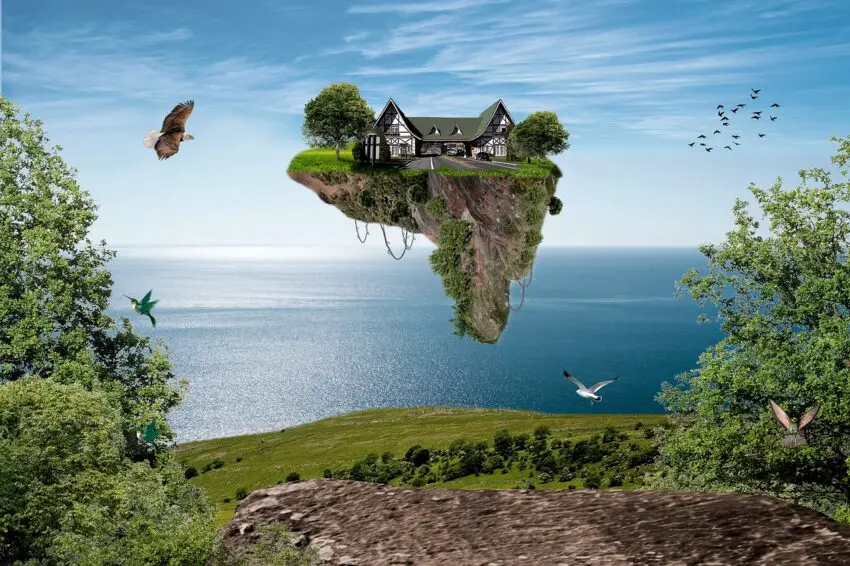
You’ll find that all objects fall at the same rate, regardless of their weight. This is because gravity pulls all objects towards the earth at the same acceleration rate , which is 9.8 meters per second squared. You can explain this to your child by saying that the earth’s gravity pulls all objects towards it with the same force, so they all fall at the same rate.
You can also ask your child to try dropping the objects from different heights and see if that affects the way they fall. This will give them a better understanding of how gravity works and how it affects objects. This experiment is a great way to introduce your child to science and to help them understand the world around them.
Science Experiment: Making a gravity well
A gravity well is a concept that is used to represent the way gravity affects the path of objects in space. In this experiment, your child will learn how gravity works by creating a visual representation of a gravity well.
Materials needed:
- A large, flat container (such as a baking tray)
- A small ball (such as a marble)
- Food coloring (optional)
Instructions:
- Pour a thin layer of flour into the flat container, making sure it covers the entire surface.
- Place the small ball in the center of the container.
- If desired, add a few drops of food coloring to the flour around the ball.
- Use your fingers to gently press down on the flour around the ball, creating a depression in the flour. The depression should be deepest around the ball and gradually become shallower as you move away from the ball.
- Observe how the ball remains in the center of the depression you created in the flour. This is because the flour represents the fabric of space-time and the ball is pulled towards the center by the force of gravity.
To take the experiment further, you can try adding more balls to the container and observe how they behave differently depending on their mass and distance from the center of gravity well. This experiment is a great way to introduce your child to the fascinating concept of gravity and spark their curiosity about the world around them.
Science Experiment: Magnets to simulate gravity
Using magnets to simulate gravitational pull can be a fun and interactive way to teach kids about gravity. In this experiment, you’ll need a few simple materials such as a magnet, paper clips, and a thin piece of string.
First, tie the string to the magnet and then attach a few paper clips to the other end of the string. Next, hold the magnet above one of the paper clips and release it. You’ll notice that the paper clip is attracted to the magnet and will follow it as it falls. This is similar to how gravity works, as objects with more mass are attracted to each other.
You can also use this experiment to show how different objects with varying masses will be affected by gravity. Try attaching different objects to the string, such as a feather, a coin, and a small toy car. You’ll notice that the magnet has a stronger pull on the coin and car due to their greater mass, while the feather will not be affected as much because it has less mass.
This experiment is a great way to introduce kids to the concept of gravity in a fun and interactive way. It can also be a starting point for further discussions about the laws of physics and the universe around us.
Science Experiment: Making a simple pendulum
Making a simple pendulum is a fun and easy way to learn about gravity and motion. For this experiment, you will need a few simple materials:
- A piece of string or thread
- A small weight, such as a paperclip or washer
- A sturdy surface to attach the string
To make your pendulum, tie the string around your weight and attach the other end to your sturdy surface. You can use a table, a chair, or any other surface that won’t move around too much.
Once your pendulum is set up, give it a gentle push to set it swinging. Watch how it moves back and forth, and notice how the speed and direction of the pendulum change.
To make your experiment even more fun, try changing the length of the string or the weight of the pendulum. How does this affect the way the pendulum moves? Can you predict how the pendulum will behave based on these changes?
Making a simple pendulum is a great way to introduce kids to the concept of gravity and motion. Plus, it’s a fun and easy experiment that can be done with materials you probably already have at home.
Science Experiment: Gravity and Air Resistance
Before performing this experiment, show your audience a shoe and a flat piece of notebook or copy paper. Explain that you will be dropping both objects from the same height. Then ask your audience these questions:
- Who thinks the shoe will hit the floor first?
- Who thinks the paper will hit the floor first?
- Who thinks both objects will hit the floor at the same time?
Experiment:
- Hold the shoe in one hand and the paper in the other.
- Hold both objects high in front of you at equal heights.
- Release both objects at the same time.
Observation: The shoe hits the floor first.
Explanation: Because of the paper’s shape, its fall is slowed by air pushing up against its under-surface – this slowing effect is called air resistance.
Science Experiment: Effect of Gravity on Plant Growth
One of the most interesting aspects of gravity is its effect on living organisms. In this experiment, we’ll be looking at how gravity affects plant growth.
To start, you’ll need to gather some materials. You’ll need:
- 2 identical plants
- 2 identical pots
- Begin by filling both pots with soil and planting one of your plants in each pot.
- Water them both thoroughly and place them side by side in a sunny location.
- Now comes the fun part. Take one of the pots and place it on its side. This will cause the plant inside to be growing at a 90-degree angle to the ground. Leave the other pot standing upright.
- Over the next few weeks, observe the growth of both plants. Measure their height using the ruler and take note of any other differences you can see.
What you should find is that the plant growing at a 90-degree angle to the ground will grow differently than the plant growing upright. This is because gravity plays an important role in how plants grow. The plant growing on its side will have to work harder to grow against the pull of gravity, resulting in a different growth pattern than the one growing normally.
This experiment is a great way to teach kids about the effects of gravity on living organisms and can lead to further discussions about how gravity affects everything from trees to humans. Have fun experimenting!
Science Experiment: Gravity and Weight
Before performing this experiment, show your audience the shoe and the piece of paper crumpled into a ball. Explain that you will be dropping both objects from the same height. Then ask your audience these questions:
- Who thinks the paper ball will hit the floor first?
- Hold the shoe in one hand and the paper ball in the other.
Observation: The shoe and the paper ball hit the floor at the same time.
Explanation: Even though the earth exerts more pull on a heavier object, a lighter object experiences a greater degree of acceleration, meaning that it moves at a greater speed. Consequently, objects of different weights fall at the same rate when other forces such as air resistance are not a factor.
Science Experiment: Center of Gravity
Now it’s time for audience participation in your science show. Ask for volunteers for each of these exercises involving the center of gravity:
Pick up a penny
Ask a volunteer to stand against a wall with his feet together, heels pressed against the wall. Place a penny about one foot away on the floor in front of him. Ask him to pick up the penny without moving his feet or bending his knees. Can he do it?
Lift your left foot
Ask a volunteer to stand with her right side against a wall, pressing her right foot and cheek against it. Instruct her to lift her left foot off the floor. Can she do it?
Jump forward
Ask a volunteer to bend forward and grab his toes, keeping his knees slightly bent. Tell him to jump forward without letting go of his toes. Can he do it?
Ask a volunteer to sit in a straight-backed chair. Tell her to keep her back straight, her feet flat on the floor, and her arms folded across her chest. Then ask her to stand up. Can she do it?
Observation: Because all of these tasks restrict the center of gravity, it’s almost impossible for a person to perform any of them.
Explanation: As far as gravity is concerned, the weight of an object is concentrated at a single center point. The center of gravity for an object with a regular shape – the Earth, for example – is located at its geometric center. However, in irregularly shaped objects – the human body , for instance – the center of gravity moves around. If you try to shift too far away from your center of gravity, you’ll lose your balance.
Share Fun Science Experiments With Family and Friends
Learning new things about the world around you is fun and exciting. It’s even more fun when you share your discoveries with your family and friends. Gravity is just one of the interesting forces of nature – there are many more to explore and share.
Final thoughts on teaching kids about gravity
Gravity is a fascinating concept that has been studied and explored by scientists for centuries. Teaching kids about gravity can be a fun and engaging way to introduce them to the wonders of science and the natural world around them.
By conducting simple experiments and activities, kids can learn about the basic principles of gravity and how it affects the world around us. From dropping objects of different weights to observing how objects fall at the same rate, there are endless ways to explore this fascinating force.
Not only can teaching kids about gravity be fun, but it can also help to develop their critical thinking skills, problem-solving abilities, and scientific knowledge. By encouraging kids to ask questions and explore the world around them, we can inspire a love of learning and an appreciation for science that can last a lifetime.
Teaching kids about gravity can be a fun and rewarding experience for both children and adults alike. By providing opportunities for hands-on exploration and discovery, we can help kids develop a lifelong love of science and learning. So, let’s get started and see where the wonders of gravity take us!
- Bardhan-Quallen, Sudipta. Championship Science Fair Projects . NY: Sterling Publishing, 2004.
- Breckenridge, Judy. Simple Physics Experiments with Everyday Materials . NY: Sterling Publishing, 1993.
- Cobb, Vicki. Bet You Can’t! NY: Lothrop, Lee & Shepard Books, 1980.
Leave a Comment Cancel reply
You must be logged in to post a comment.

IMAGES
VIDEO
COMMENTS
12 Gravity Experiments To Try. Here are 12 gravity science experiments that are great for elementary school kids. Learn about gravity and its effects in a fun and hands-on way. You may also want to explore: Air Resistance Projects. Dropping Objects. Gather various objects of different weights and sizes (e.g., a feather, a paperclip, a small ball).
Conducting an experiment on ocean tides will help students to develop a better understanding of how gravity works. The experiment will explain why the Earth has a bulge on the side, directly beneath and directly opposite the moon. The moon's orbit creates ocean tides using gravitational pull. Before beginning, explain to students that gravity is the force that pulls all matter in toward the ...
These gravity experiments are all fantastic demonstrations of gravity and a great way to learn about Isaac Newton and Galileo's famous discoveries.If you enjoy them, do check our my book This IS Rocket Science which is full of exciting space activities demonstrating how rockets overcome gravity and other forces to launch into space followed by a tour of the solar system with an activity for ...
Although this experiment is demonstrated with younger children, this can be an excellent lesson opener to introduce the role of gravity and gravitational pull. Challenge your student to experiment with distance and magnetic strength by trying different positioning of the magnet and clips! Learn More: Buggy and Buddy. 8. Air Pressure and Water ...
Gravity Activities: PHET is one of my go-to websites for virtual labs and simulations. They have an interactive on gravity and orbits where students can change the mass of the sun or Earth and see what it does to our gravitational pull, velocity, and orbital path. You can find it here.
Gravity is a fundamental part of nature that keeps our feet planted firmly on the ground. This unseen force is responsible for tides, keeping Earth from careening into the darkness of space, and for causing food to hit the kitchen floor when it slips from your hand. Though invisible, gravity's effects can be observed by performing simple and easy-to-do experiments.
Simply put, gravity is the force of the earth that pulls objects towards its core, preventing them from floating off into space. For many adults, explaining the concept of gravity to a child can seem daunting. However, through the use of the following gravity experiments for kids, children will gain a better grasp of gravity's role in our everyday lives while also having some fun!
Science Experiments for Kids. ... You can start with a simple push and pull experiment using a toy car and a ramp. Just set the car at the top of the ramp and let it go. ... Your child can observe how the car's movement is influenced by the pull of gravity. Next, you can make a homemade magnet using a nail, a piece of wire, and a battery. ...
Gravity will pull the heavy end down and cause it to drip more wax, thus making the other end heavier and causing the candle to oscillate between the two ends as the weight changes. Inclined Planes Another experiment is to use an inclined plane to test how gravity effects the movement of objects.
Science Experiment: Dropping objects of different weights. Experiment 1: Dropping objects of different weights is a classic gravity experiment that teaches kids about mass and gravity. All you need for this experiment are a few objects of different weights, like a feather, a rock, and a rubber ball, and a place to drop them from, like a balcony or a staircase.